Today's Tidbit... The Jump Pass
The legend says that Bronco Nagurski threw the first jump pass in the 1932 NFL Championship game when he had the ball in his backfield, began running forward, and suddenly jumped straight up and threw the ball to a teammate a bit downfield. The Bears' opponents, the Portsmouth Spartans, protested the play, arguing that Nagurski had thrown the pass from within five yards of the line of scrimmage, which was illegal then.
The NFL changed its rule in 1933, allowing passing from anywhere behind the line of scrimmage. The NCAA followed suit in 1945, which opened up much of the short passing game we know today. Changing that rule was one in a long line that liberated the passing game since any quick pass thrown immediately after the snap, from a three-step drop or a five-step drop, was illegal until the rules changed.
Using the jump pass makes sense when throwing a quick pop pass over the line in the old double-tight lineups, particularly for teams with a short quarterback. In his 1950 Football: Secrets of the "Split T" Formation, Don Faurot discusses the quarterback throwing a jump pass after the buck fake, a play often called a buck pass. The diagram below shows a similar play from the belly series.
However, quarterbacks and halfbacks threw many jump passes while rolling out and from well behind the line of scrimmage. Consider the 1938 publicity photo below of Georgetown quarterback Jules Koshlap.
The photo is from 1938, seven years before the NCAA lifted the restriction on throwing within five yards of the line of scrimmage, so he threw jump passes while rolling out or from what later became the pocket.
Bobby Layne threw jump passes with enough frequency to warrant a picture of him throwing one in the second year following the NCAA rule change. So, jump passes were around for some time before "jump pass" first appeared in a newspaper since that came in the coverage of the 1948 Baltimore-Cleveland AAFC Championship game.
So, why did passers throw and coaches teach the jump pass, a technique that reduces the power and accuracy of throws? My best explanation is that passers had to throw over and around defenders more often than occurs today, and at least four factors made the jump pass more valuable than today.
First, passers rolling out more often faced defenders running the same direction at varying depths, so passers jumped to throw over those defenders. Even in 1958, Forest Evashevski touted a planned jump pass on a rollout, though it is unclear whether a jump pass is needed on that play.
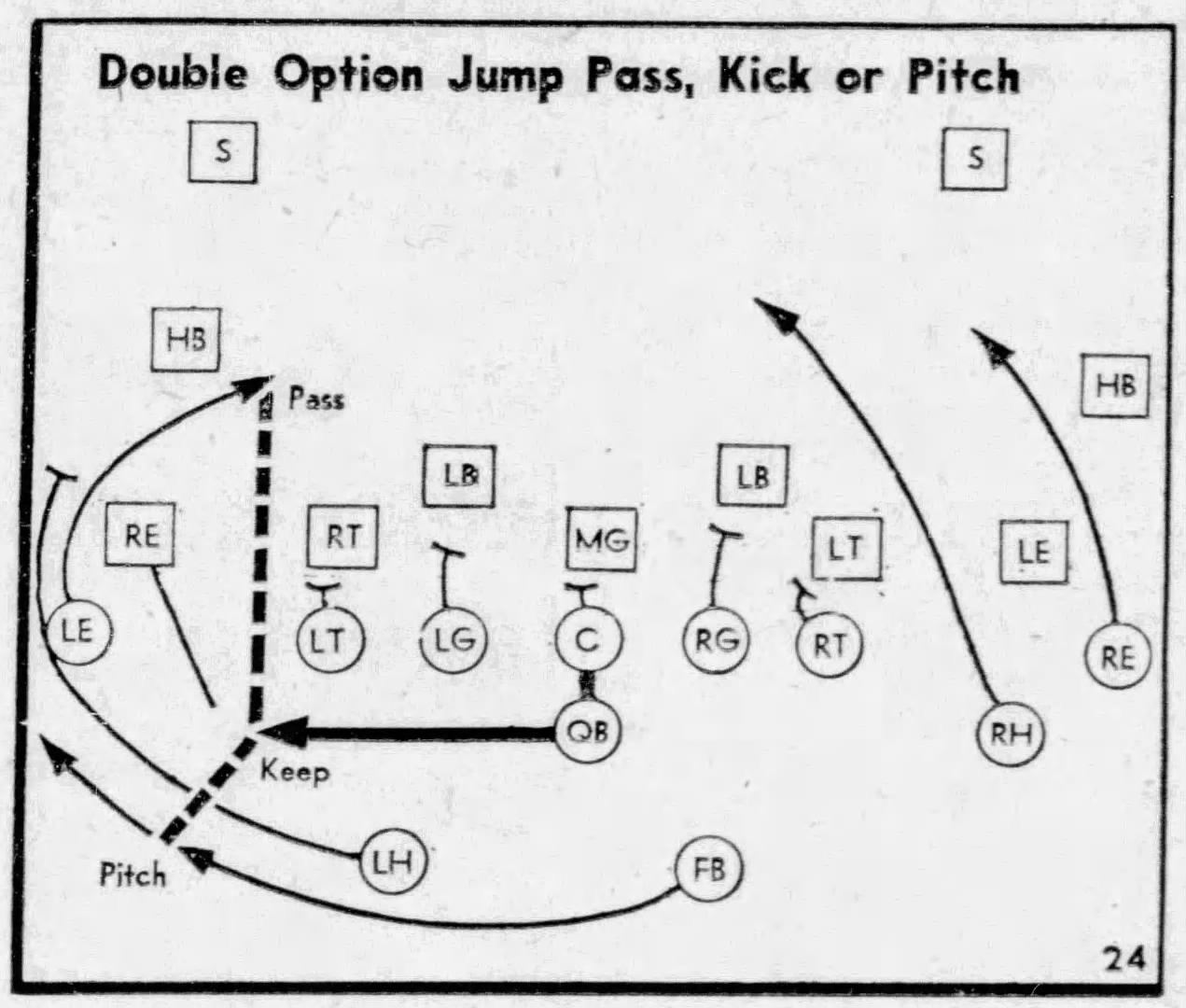
Second, short dropback and timing routes had not yet developed. Passers primarily threw to already open players, so they did not need the accuracy and timing required today.
Third, the restricted use of the hands by pass blockers meant that pass blocking was far less effective, so passers were often under pressure when in the pocket and had to jump to get the ball to a running back releasing into the flat.
Fourth, passers of the era could not throw the ball away when under pressure. The ball had to be thrown near an eligible receiver at a spot where they could conceivably catch it. That forced quarterbacks to make riskier throws to avoid intentional grounding, and some of those throws were jump passes.
Please comment below if you have insight into the value of jump passes. Otherwise, enjoy two more action photos of passers jumpin' around.
Football Archaeology is reader-supported. Click here to buy one of my books or otherwise support the site.


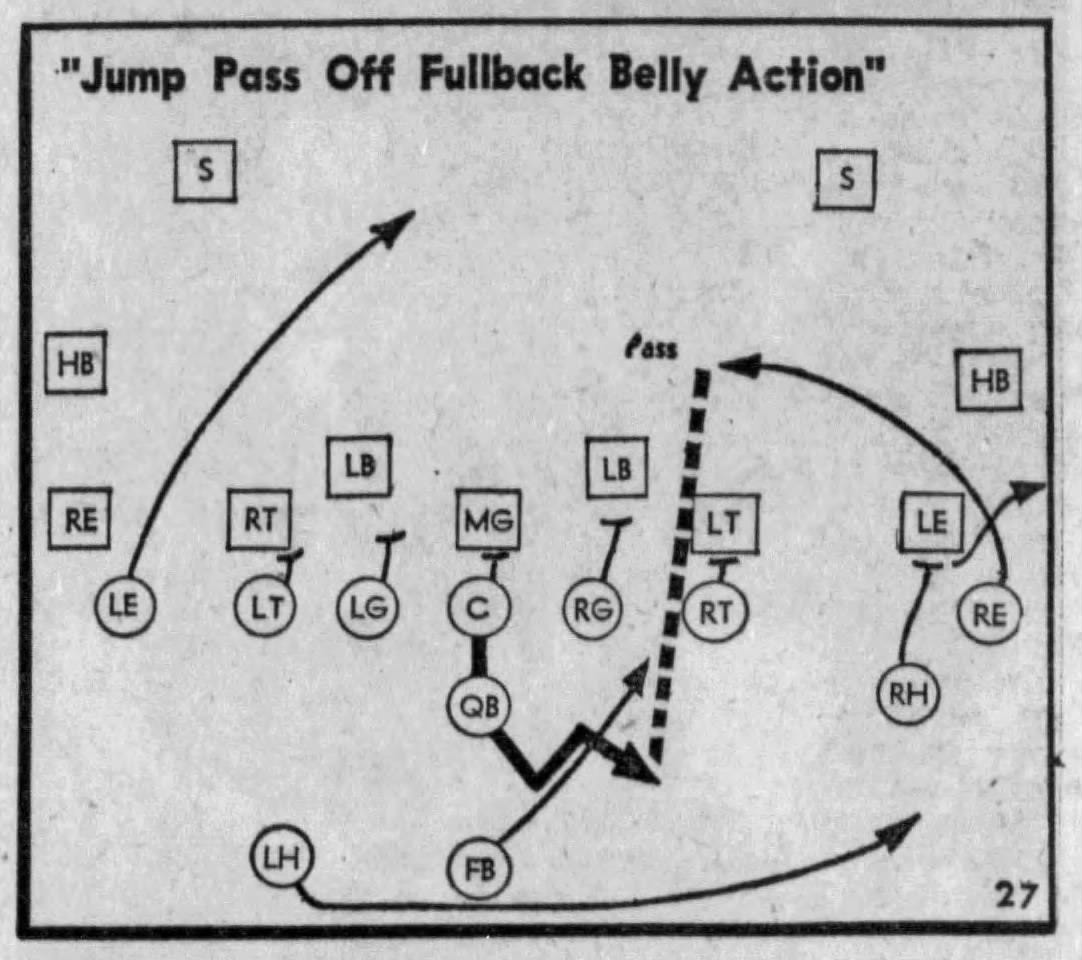
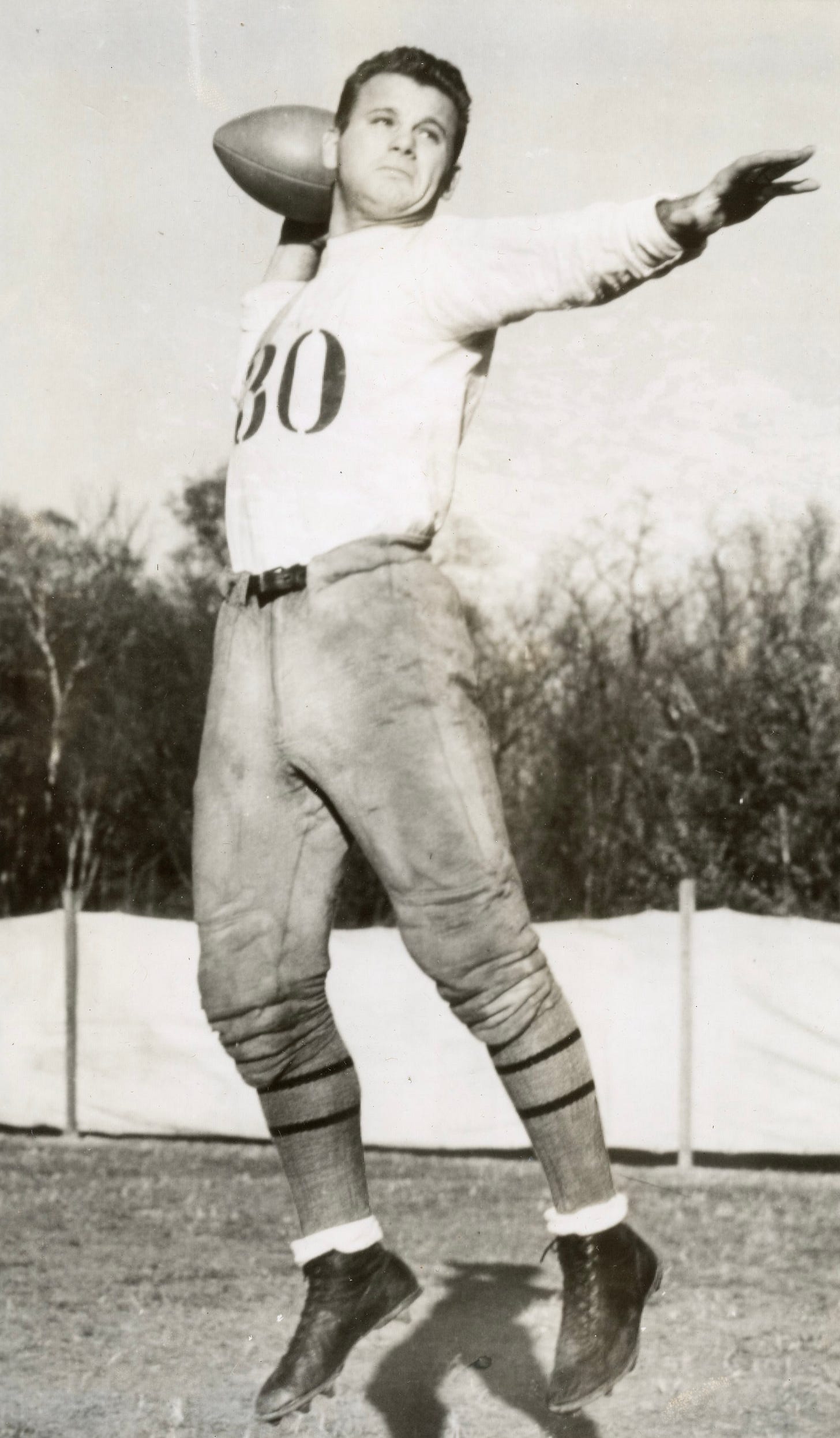
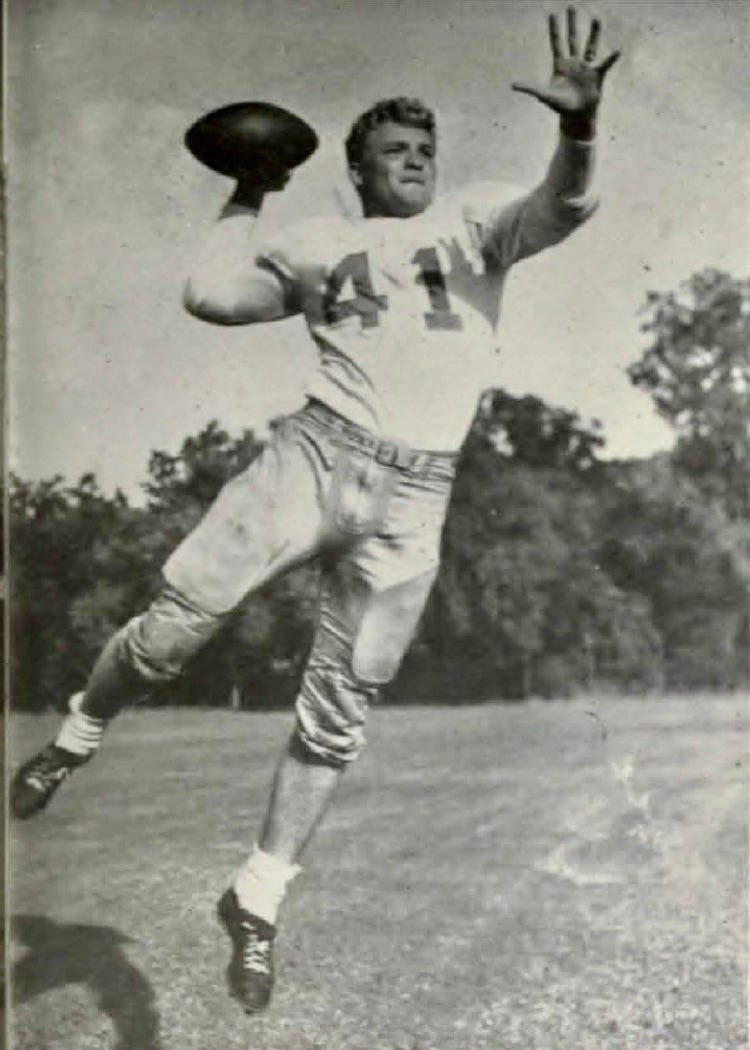
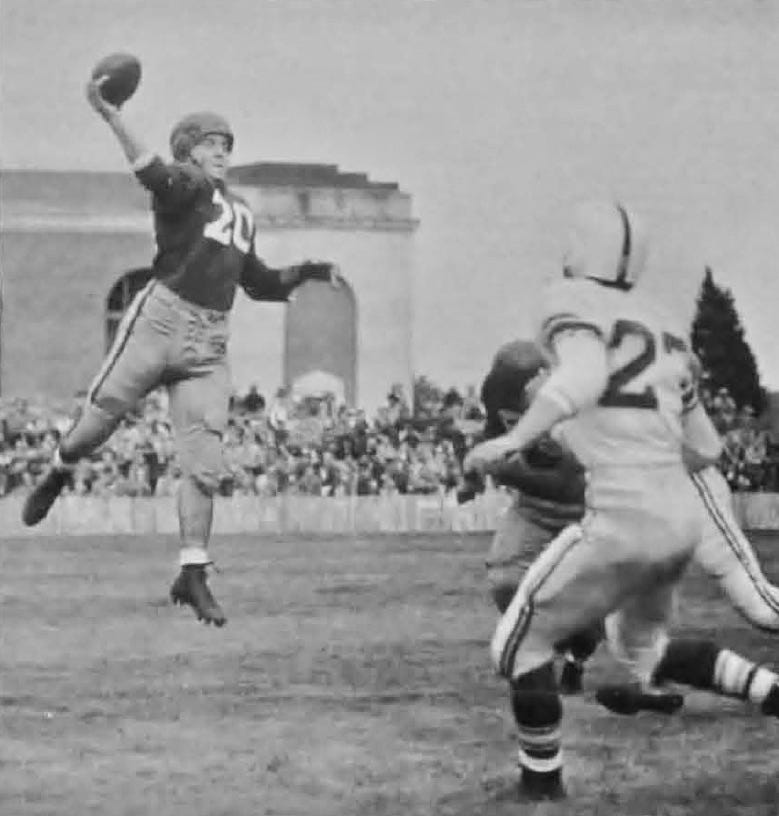
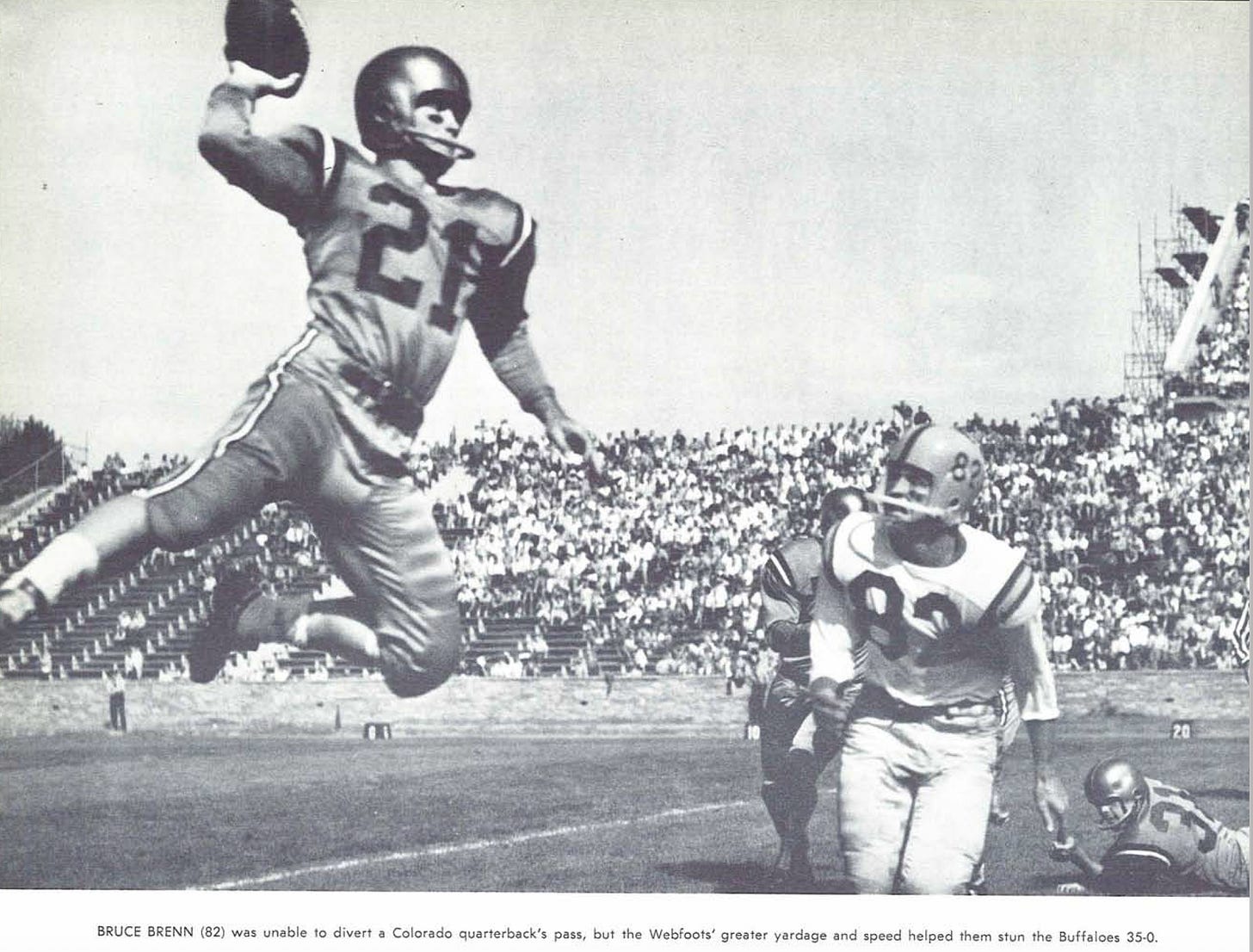
Four good reasons...